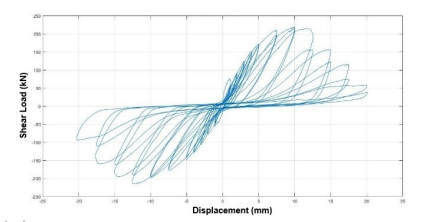Daniel Quiun and Qenti Herencia
i Professor, Pontificia Universidad Católica del Perú, Lima, Perú, dquiun@pucp.edu.pe
ii Bachelor’s Student, Civil Engineering, Pontificia Universidad Católica del Perú, Lima, Perú qenti.herencia@pucp.pe
ABSTRACT
Many buildings with reinforced concrete (RC) frames have infill walls. In Peru, the common masonry units used in such walls are horizontally-hollow or perforated clay bricks. An experimental program was done in 2016 at the Structures Laboratory of the “Pontificia Universidad Católica del Perú” to study the interaction between an existing RC frame and a new infill wall built using horizontally-hollow bricks. The cyclic lateral load test proved how the interaction occurred, which ended with mixed failures in the infill wall. The present paper shows two numerical models that try to replicate the load-displacement capacity curve of that cyclic lateral load test: 1) 3D simple micro model using ABAQUS; and 2) seven 2D macro models using ETABS with the equivalent strut method. For both cases, the Concrete Damage Plasticity law was used to simulate the behavior of the concrete elements and the masonry panel. In the macro model, axial stiffness degrading equations dependent on the properties of the equivalent strut were used. The simple micro model had the best representation of the capacity curve and the plastic deformations followed the cracking pattern of the wall as the experimental test. Regarding the macro model, five gave good results, among them the model in which the width of the equivalent strut is taken as ¼ of the diagonal of the masonry panel. This model is also the one adopted by the Peruvian Masonry Code.
KEYWORDS: Infill wall, Concrete Damage Plasticity, Equivalent Strut, Hollow brick, Load-displacement curves.
082-Quiun.pdf



